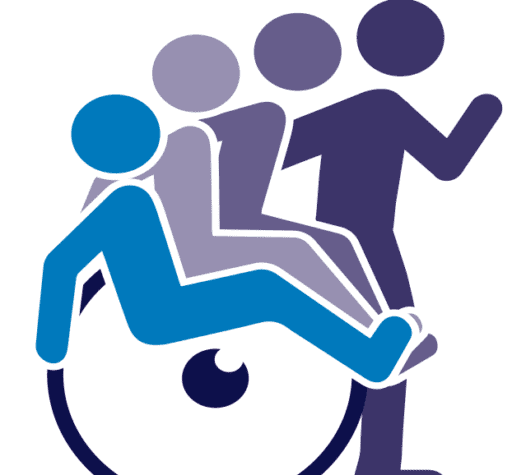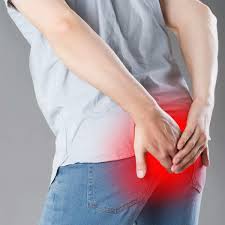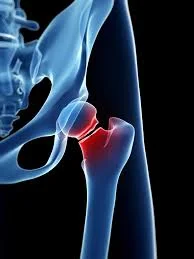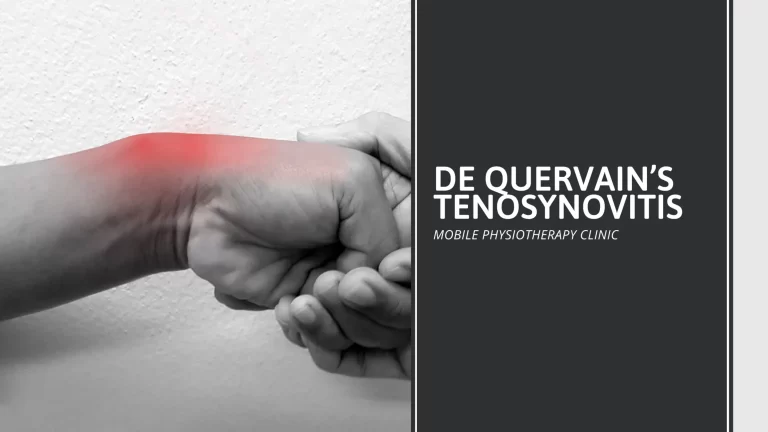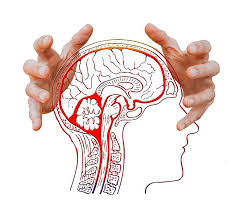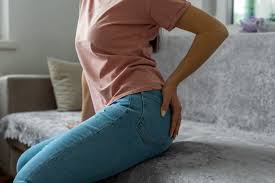Pain in the Middle of the Buttocks
Table of Contents
Introduction:
This kind of pain can come on gradually or all at once, and it can feel anything from mild to severe or shooting. It frequently arises from problems with the surrounding soft tissues, muscles, joints, or nerves.
This pain may be worsened by prolonged sitting, bad posture, excessive usage, or underlying medical issues. Effective treatment and the avoidance of further consequences depend on an understanding of the possible causes.
Causes of Pain in the Middle of the Buttocks:
Mid-buttock pain can be caused by several musculoskeletal or nerve-related disorders. One of the most frequent reasons is piriformis syndrome, which is characterized by deep buttock pain that may spread down the leg as a result of the piriformis muscle irritating or compressing the sciatic nerve. Another common reason is sacroiliac joint dysfunction, which is caused by inflammation or misalignment in the joint that connects the spine to the pelvis.
Pain in the middle buttocks can also result from muscle strains in the gluteal area, particularly from overuse or abrupt movements. Additionally, extended sitting or direct pressure can develop ischial bursitis, which is inflammation of the bursa around the sit bones and results in localized pain. Sciatica resulting from spinal problems or herniated discs may cause pain that radiates down from the buttocks.
Additional possible reasons include lumbar disc herniation, tailbone (coccyx) injuries, and trigger points in the gluteal muscles, all of which can lead to or directly produce pain in the center of the buttocks. A proper diagnosis is necessary to pinpoint the precise cause and direct treatment.
Signs and symptoms of mid-buttock pain
Depending on the underlying reason, symptoms of buttock pain might vary, but they frequently include a deep, aching, or intense pain in the center, between the hips. Physical activity like running or crouching, as well as long periods of sitting and ascending stairs, may worsen this pain. When the sciatic nerve is affected, as is the case with disorders like sciatica or piriformis syndrome, the pain may occasionally radiate down the back of the thigh or leg.
Additionally, people may feel tender to touch, experience muscle stiffness, or pressure or tightness in the buttocks. In more severe cases, there may be accompanying symptoms that indicate nerve involvement, such as leg weakness, tingling, or numbness. Bending, twisting, and getting up from a seated posture are among movements that might make the pain worse. If the reason is trauma or injury, there may also be apparent bruising or swelling.
Diagnosis:
A combination of medical history, physical examination, and imaging tests is used to diagnose buttock pain in the middle. A medical professional will first inquire in-depth about the onset, duration, and nature of the pain and any related symptoms, such as tingling or numbness in the legs.
As part of the physical examination, they could measure muscle strength, tenderness, and range of motion, and do certain tests to check for joint dysfunction or nerve involvement. To screen for disorders including herniated discs, sacroiliac joint issues, piriformis syndrome, or soft tissue injuries, imaging tests like X-rays, MRI, or CT scans may be ordered if necessary.
Diagnostic injections (e.g., anesthetic into the SI joint or piriformis muscle) or nerve conduction studies are sometimes performed to identify the precise cause of the pain.
Treatment of Pain in the Middle of the Buttocks:
The underlying reason for your buttock pain and the intensity of your symptoms will determine your treatment options. They might consist of:
- Lifestyle treatment options: These consist of using heat or cold to relieve pain, applying topical gels or creams, stretching, utilizing a customized seat cushion, and avoiding activities that aggravate the condition.
- Medications: You can take drugs to help lower your pain levels if necessary. Painkillers, including prescription-strength opioids or over-the-counter nonsteroidal anti-inflammatory medicines (NSAIDs), can be used orally.
- Physical therapy: To address muscular imbalances, physical therapy can help you strengthen your muscles and loosen overly tight ones. To lessen the severity of your pain, a physical therapist may also apply manual therapies and therapies that include electrical stimulation, heat, or ice.
- Surgery: For severe cases of buttock pain caused by spinal issues like herniated discs, which impair one’s capacity to stand and move comfortably and create chronic pain, surgery may be an option. Surgery, however, could not be considered until weeks or months have passed after attempting alternative therapy options.
Exercises for Pain in the Middle of the Buttocks:
Figure Four Stretch:
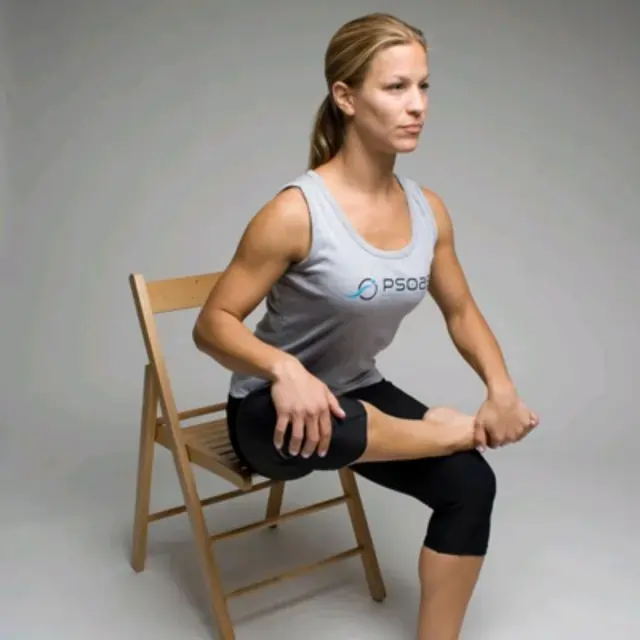
To reduce the pain and stiffness in the middle of the buttocks, the Figure Four Stretch is a useful exercise that targets the piriformis and gluteal muscles. Make a “4” shape with your legs by crossing one ankle over the other thigh, right above the knee. The crossed leg’s buttocks should feel deeply stretched. Two to three times for each leg. Those who suffer from sciatica, piriformis syndrome, or overall buttock soreness will find this stretch particularly beneficial.
Seated Spinal Twist:
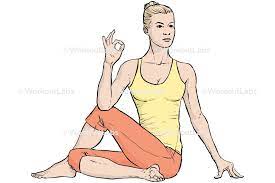
By targeting the spine, glutes, and piriformis muscle, the Seated Spinal Twist is a mild yet efficient stretch that helps reduce pain in the middle of the buttocks and increase spinal mobility. Depending on comfort, either bend your left leg beneath you or keep it extended. This stretch is helpful for problems like sciatica or piriformis tightness because it relieves tension in the lower back and buttocks.
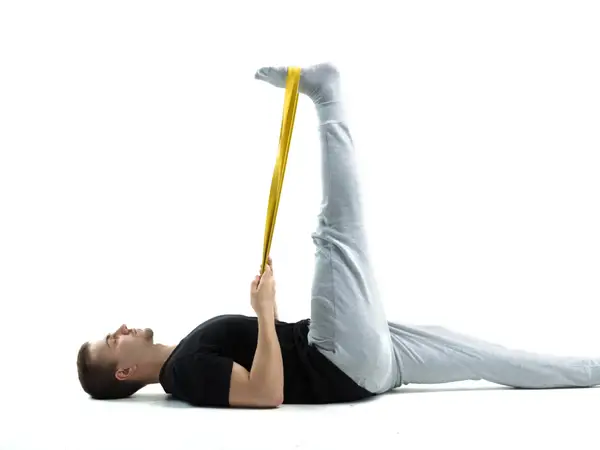
A useful exercise for releasing tension in the back of the thigh, which can lead to buttock pain, particularly when associated with sciatica or lower back problems, is the hamstring stretch. This stretch is done by sitting on the floor with one leg bent and the other leg stretched straight, such that the inner thigh of the extended leg is pressed up against the sole.
The back of your thigh and probably your lower buttocks should feel somewhat stretched. On each leg, repeat two to three times. This stretch relieves nerve tension, increases flexibility, and eases soreness in the center of the buttocks, which is caused by tight hamstrings tugging on the pelvis.
Glute Bridges:
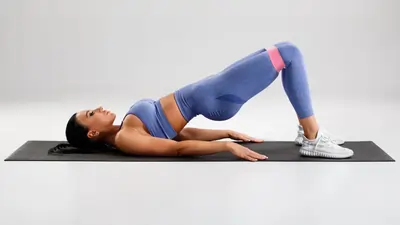
Glute bridges are a great way to strengthen your core, lower back, and gluteal muscles, which can help avoid and relieve pain in the center of the buttocks. After two to three seconds of holding the top position, carefully drop your hips back down. Increasing glute strength relieves strain in the piriformis and other deep buttock muscles, lowers pressure on the lower back, and improves pelvic stability.
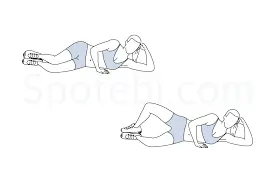
To lessen pain in the center of the buttocks, the Clamshell Exercise targets and strengthens the gluteus medius and minimus, two important muscles involved in hip stability and support. Without turning your hips or pelvis, carefully raise your upper knee as high as you can while maintaining your feet touching.
For 2–3 sets, complete 10–15 repetitions on each side. By strengthening and activating the deep hip muscles, this exercise enhances alignment, eases strain on the piriformis, and aids in the recovery from buttock and lower back pain.
Child’s Pose:
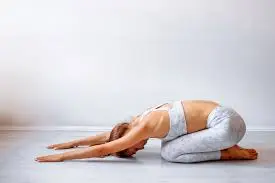
Pain in the center of the buttocks can be effectively relieved by performing Child’s Pose, a mild and healing yoga stretch that helps release tension in the lower back, hips, and buttocks. Depending on how comfortable you are, hold the posture for 30 to 60 seconds or more.
Child’s Pose helps to release tension, increase flexibility, and encourage relaxation throughout the lower body by gently stretching the hip rotators, gluteal muscles, and spinal extensors.
Pigeon Pose:
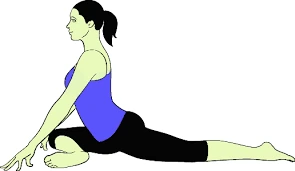
A deep hip-opening yoga pose that works well for the gluteal and piriformis muscles, Pigeon Pose helps ease mid-buttock pain, particularly that caused by sciatica or piriformis syndrome. Start in the downward-facing dog posture or tabletop position to do this pose.
Lower your body over your front leg, resting on your forehead or forearms, while maintaining a square hip position. Pigeon Pose helps to relieve tension, increase mobility, and lessen stress on the sciatic nerve by giving the hip rotators and glutes a thorough stretch. It’s crucial to approach this stance slowly and stay out of it if your knees hurt.
Cat-Cow Stretch:
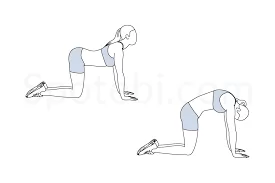
The Cat-Cow Stretch is a mild, flowing exercise that helps people with middle buttock pain by increasing spinal flexibility and releasing tension in the lower back and buttocks. The Cow Pose involves taking a deep breath while arching your back and raising your head and tailbone toward the ceiling.
The Cat Pose occurs when you lower your chin to your chest, bring your tummy into your spine, and exhale as you circle your spine. For 8–10 repetitions, alternate between these two postures carefully, coordinating your breathing with each motion. This stretch relieves pain in the middle buttocks by releasing tight glutes, reducing pressure in the pelvic and lower back regions, and mobilizing the spine.
Knee-to-Chest Stretch:
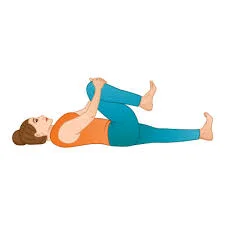
Pain in the center of the buttocks can be eased with the easy and efficient Knee-to-Chest Stretch, which releases tension in the gluteal and lower back muscles. Using your hands to draw it in, slowly raise one knee toward your chest until your lower back and buttocks feel stretched. On each side, repeat two to three times.
Dead Bug:
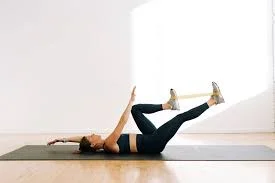
An exercise that strengthens the core and stabilizes the pelvic and lower back, the Dead Bug indirectly relieves mid-buttock pain caused by instability or bad posture. This exercise involves lying on your back with your legs bent at a 90-degree angle above your hips and your arms straight up toward the ceiling.
Maintain a level back and avoid arching it as you slowly descend your left leg and right arm toward the floor. By strengthening the deep core muscles and improving coordination, this exercise can help stabilize the hips and spine and lessen the pressure on the piriformis and glutes.
Leg Raises:
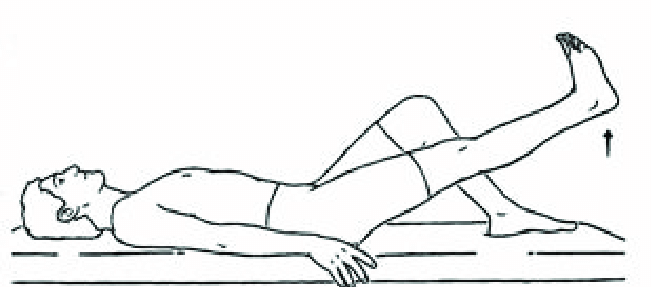
The lower abdominal muscles are the main focus of leg lifts, an exercise that strengthens the core. After your legs are at a 90-degree angle or as high as is comfortable, take a moment to stop, then carefully bring them back down without allowing them to come into contact with the floor. Leg lifts promote lower back health, increase hip flexor strength, and strengthen the core.
Butterfly Stretch:

The butterfly stretch is a useful exercise for increasing lower back, hip, and inner thigh flexibility, which can assist in releasing tension that causes buttock pain. This stretch is done by sitting on the floor with your back straight and bringing your foot soles together while letting your knees fall to the sides. By loosening up tense hip and glute muscles, this stretch improves mobility and lessens buttock pain.
Wall Sit:
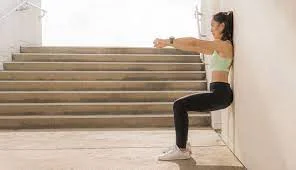
Depending on your abilities, maintain the posture for 20 to 60 seconds while keeping your back flat against the wall. Wall sits can lessen tension and soreness in the center of the buttocks by increasing lower body muscle stability and endurance.
Conclusion:
Buttock pain can have a major impact on everyday activities and general comfort. Effective therapy requires determining the underlying reason, whether it is joint problems, nerve compression, or muscle tension.
With the right diagnosis, symptoms can be relieved and recurrence can be avoided with a mix of rest, specific exercises, stretching, and, if required, medical assistance. Effectively treating and minimizing buttock pain requires prompt treatment and regular care.
FAQs
Musculoskeletal problems like nerve compression, muscular tension, or even medical disorders like tumors or infections can cause buttock pain. Knowing what causes buttock pain will help you get treatment quickly, avoid more injuries, and regain your comfort and range of motion.
Pressure on the ischial tuberosities (sitting bones), muscle imbalances, decreased blood supply, and possible nerve compression are the main causes of buttock pain during extended sitting. It’s critical to strengthen the gluteal muscles, take regular pauses to walk about, and correct posture to alleviate this pain.
When sitting or lying down, painkillers like acetaminophen (Tylenol), naproxen (Aleve), and ibuprofen (Advil, Motrin) can assist with buttock pain. Based on your medical history, it’s critical to confirm that you can take these drugs safely.
Indeed, walking may play a significant role in your gluteal tendinopathy rehabilitation and recovery, but there are a few things to take into account. Going overboard might make matters worse.
A rash called intertrigo develops in the skin’s creases. Skin-to-skin contact generates friction and a warm, humid environment that is perfect for the development of germs and fungi. Butt cracks, or intertrigo, are frequent in the skin between the buttocks and can become extremely painful, itchy, and sensitive.
When buttock pain is accompanied by one or more of the following warning signs and/or symptoms, it is best to see a doctor: numbness and soreness in the groin. Additionally, some people may have numbness, which makes sitting challenging.
References:
- Dpt, K. G. P. (2025b, May 6). What causes buttock pain and how to relieve it. Verywell Health. https://www.verywellhealth.com/buttock-pain-6456216
- Nwachuku, A., DO. (2023b, March 3). What causes buttock muscle pain, and how to relieve it. Spine-health. https://www.spine-health.com/blog/what-causes-buttock-muscle-pain-and-how-to-relieve-it
- Watson, S. (2024b, June 13). What’s causing this pain in my buttocks? Healthline. https://www.healthline.com/health/pain-in-buttocks
- Ames, H. (2025c, January 6). What causes buttock pain when sitting? https://www.medicalnewstoday.com/articles/pain-in-bottom-when-sitting
- Narayana Health. (n.d.). Narayana Health. https://www.narayanahealth.org/blog/buttock-pain-causes-and-treatment
- Clinic, O. (2025b, March 10). What causes pain in the buttocks? The Orthopedic Clinic. https://orthotoc.com/buttock-pain-causes/
